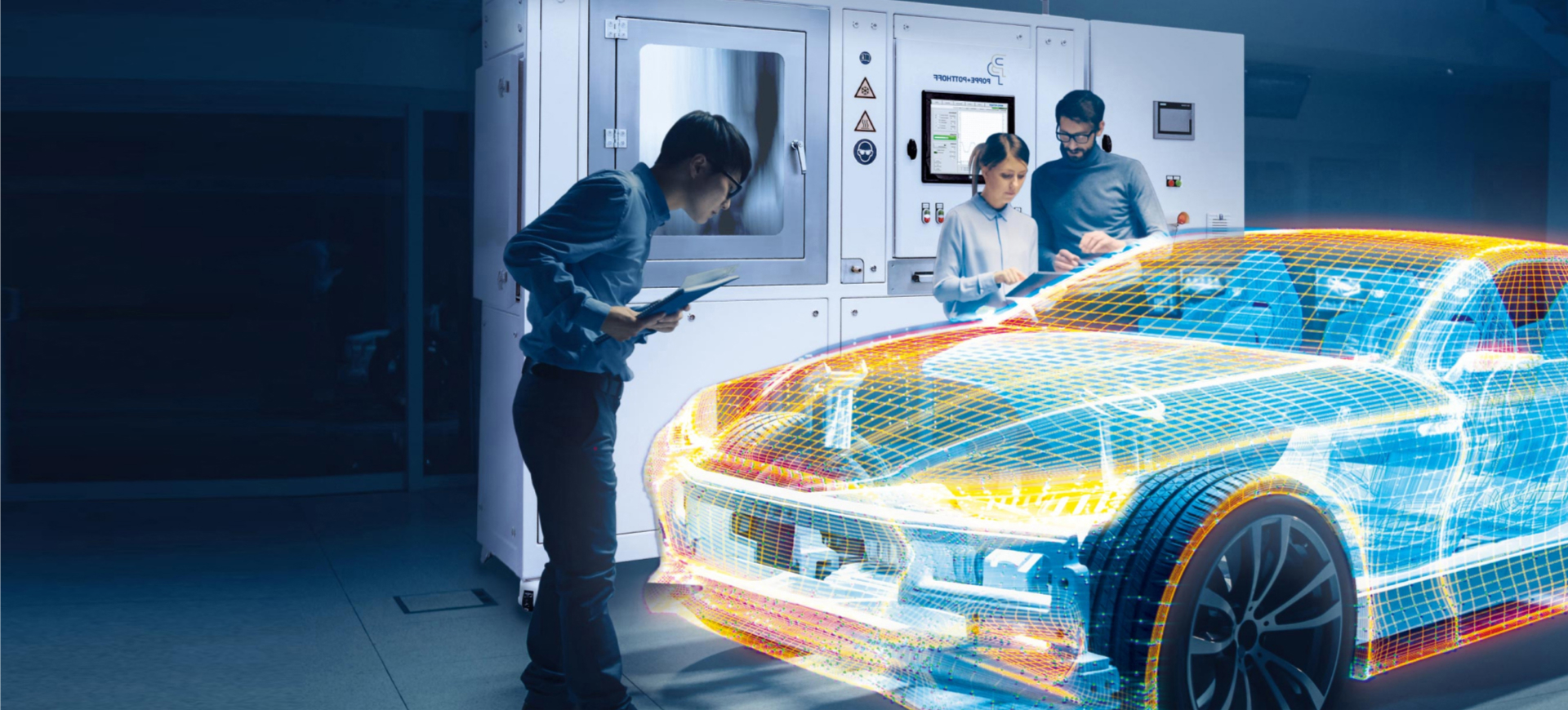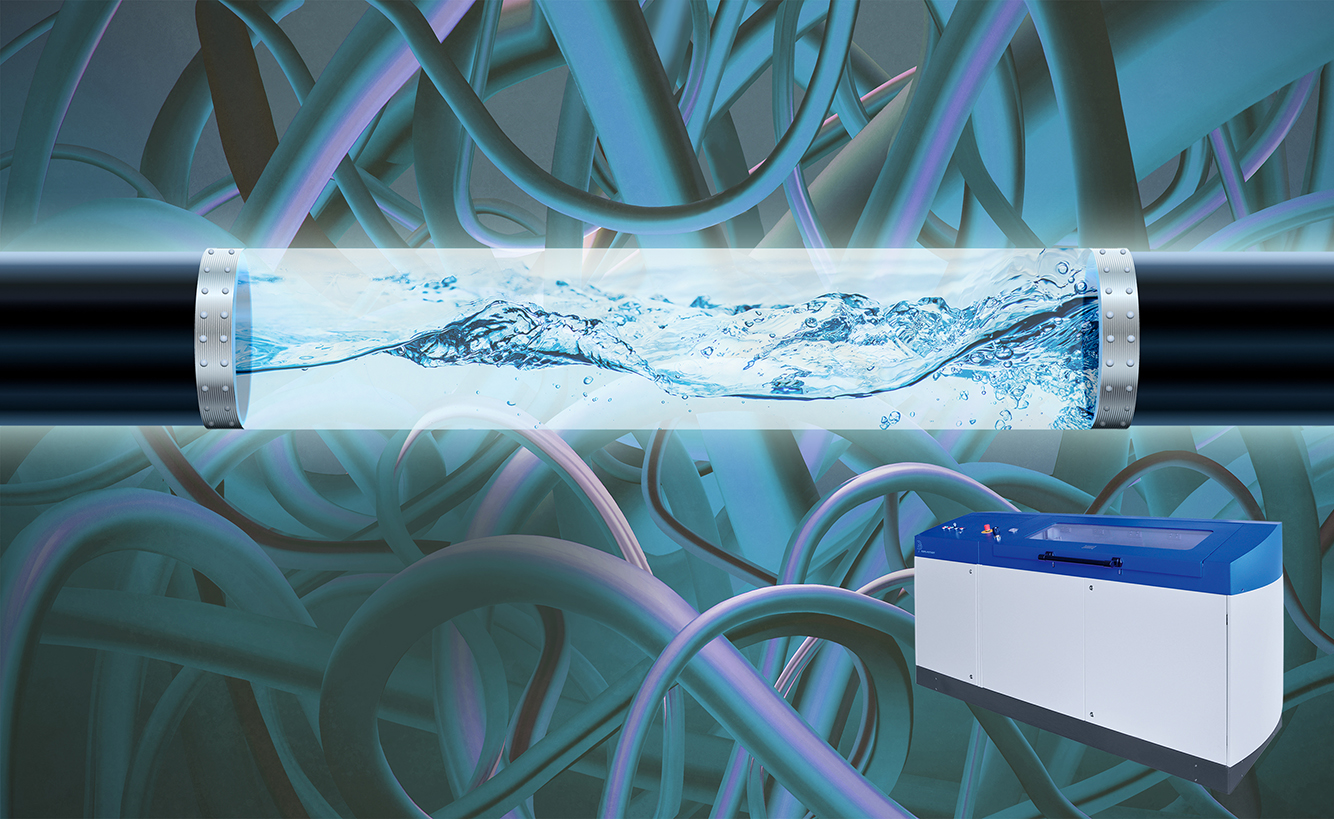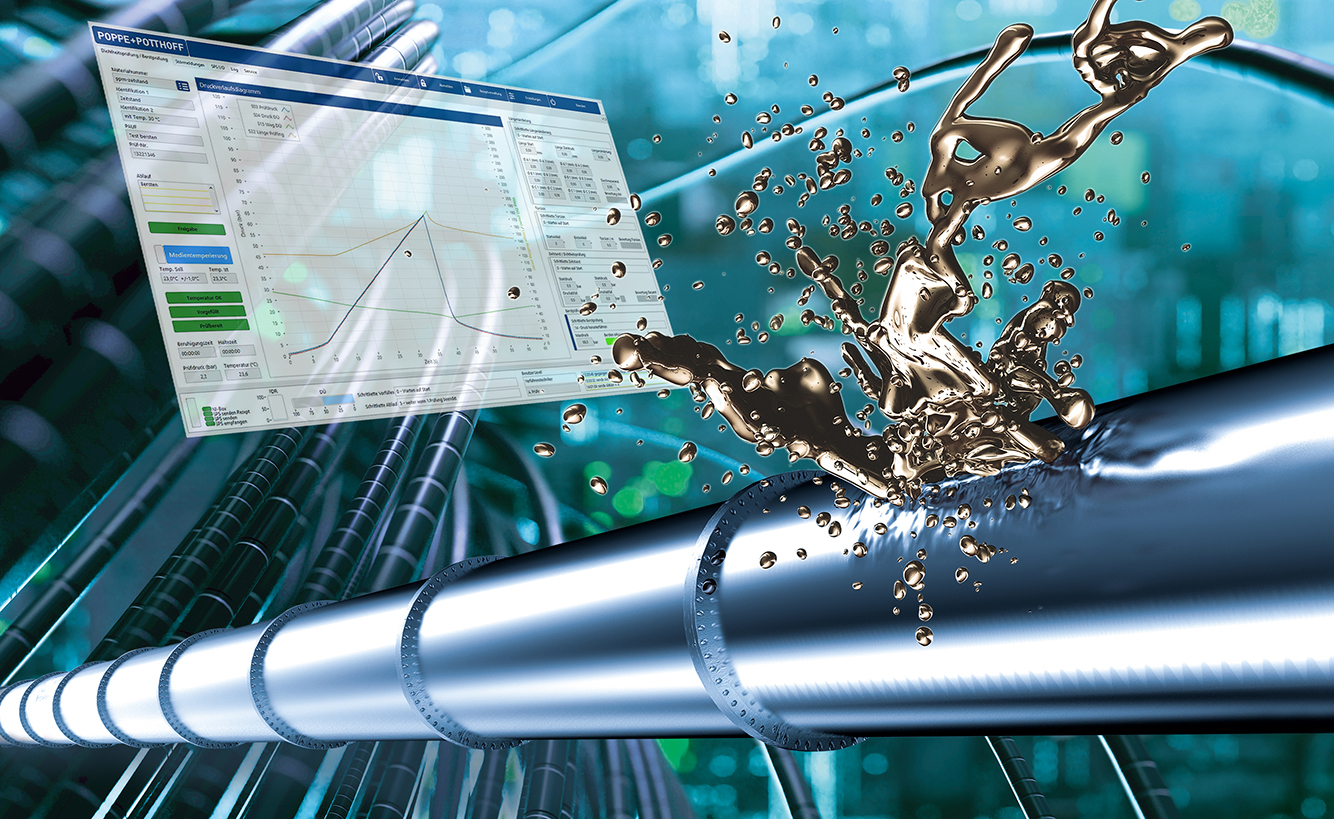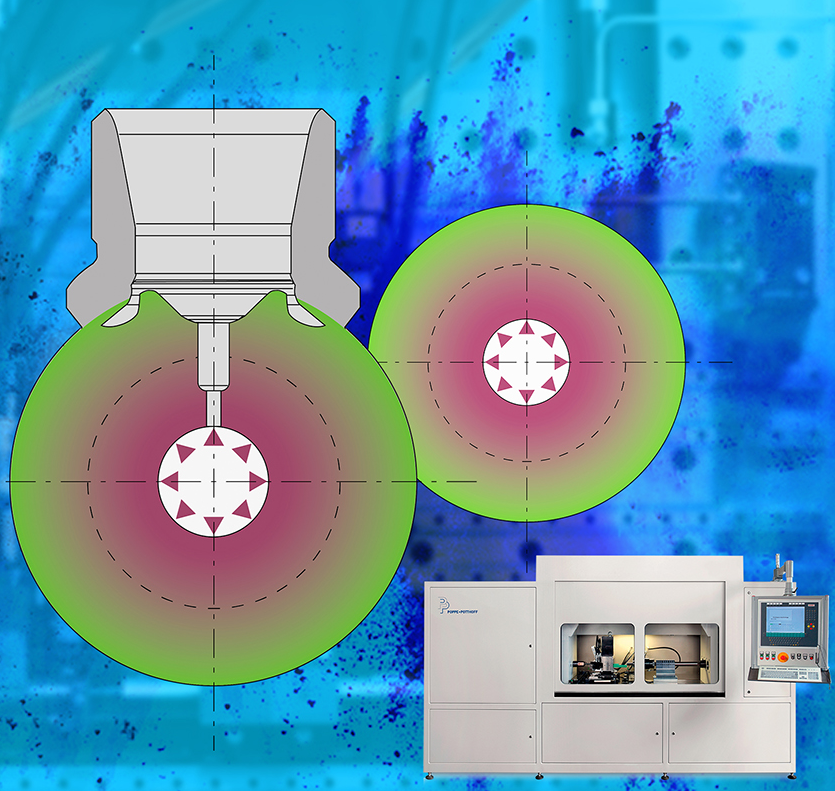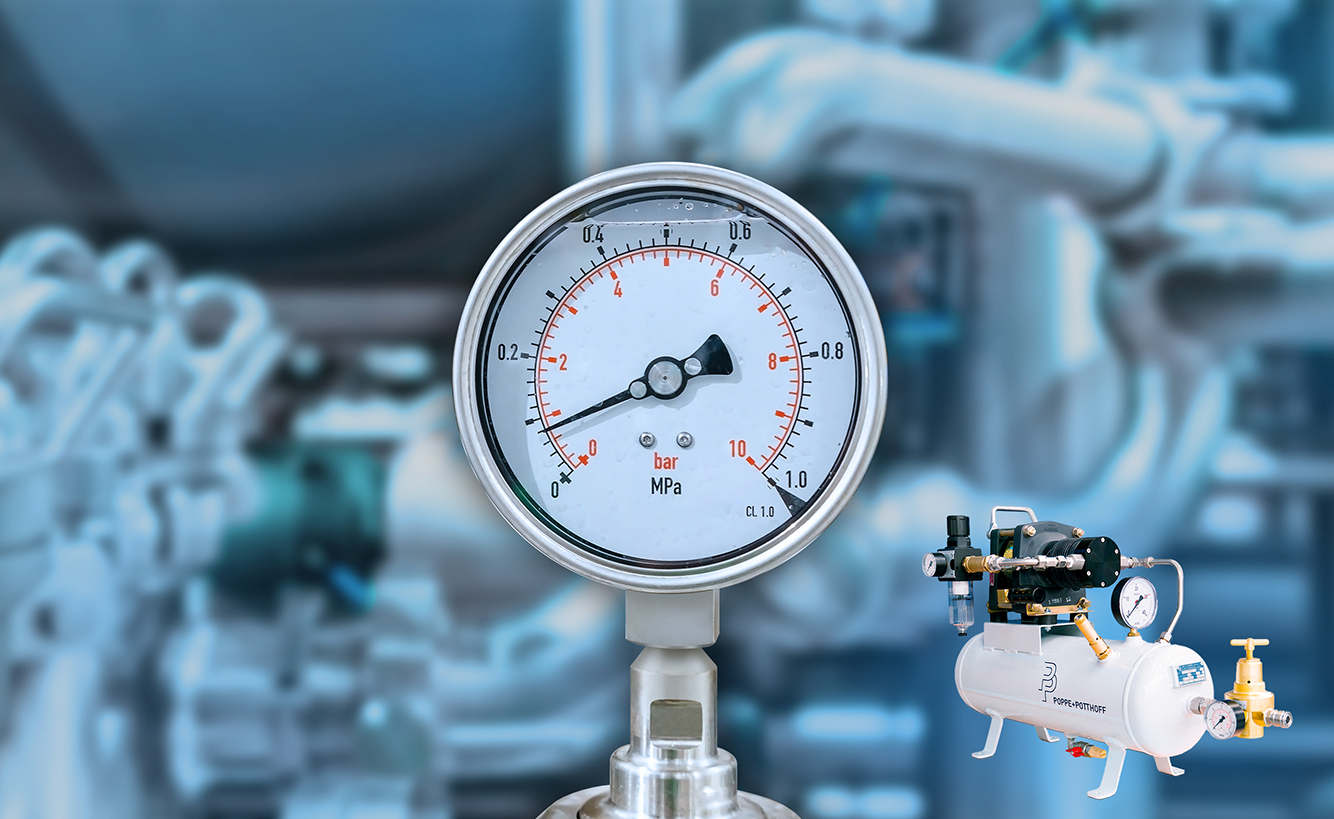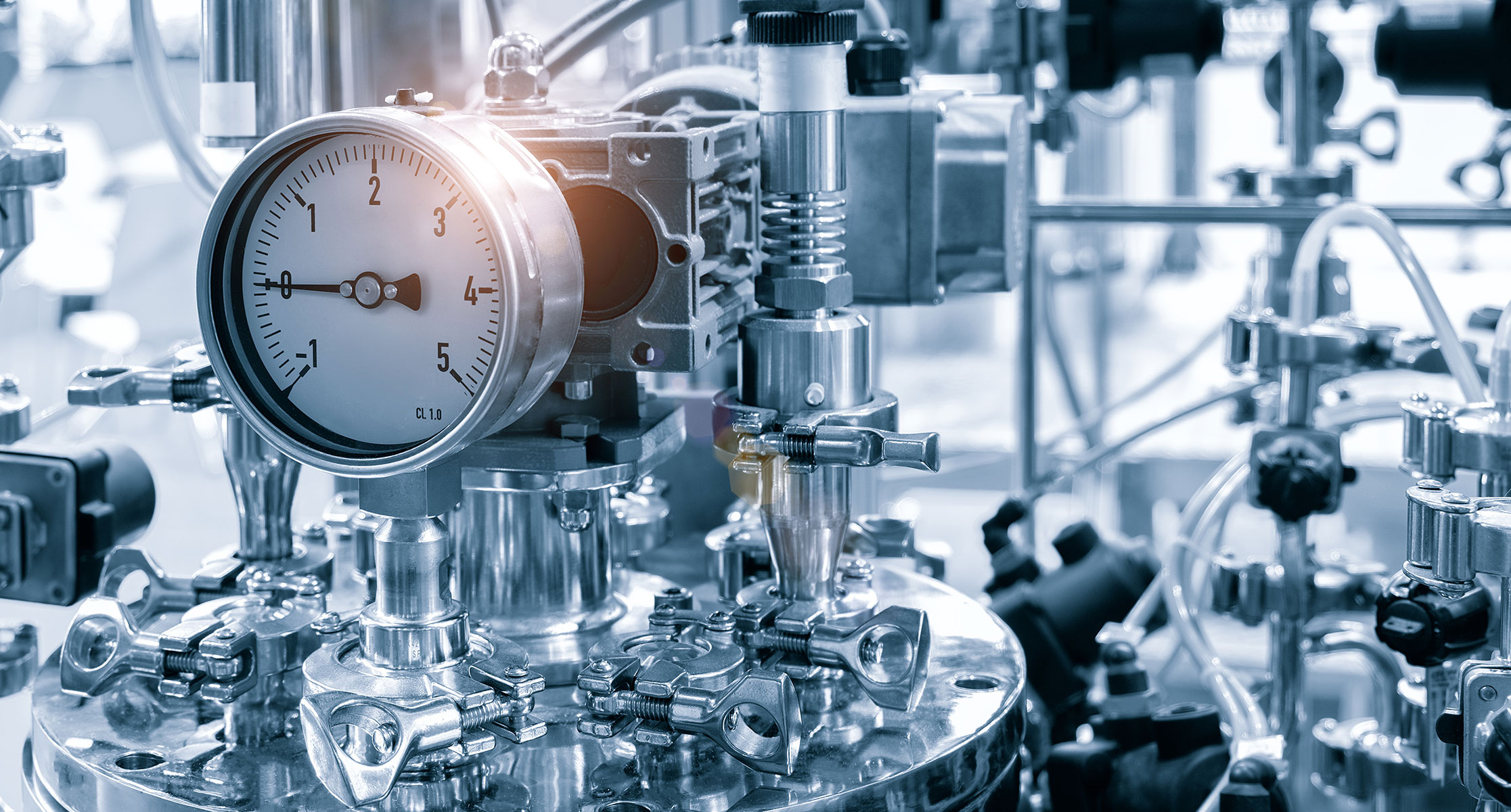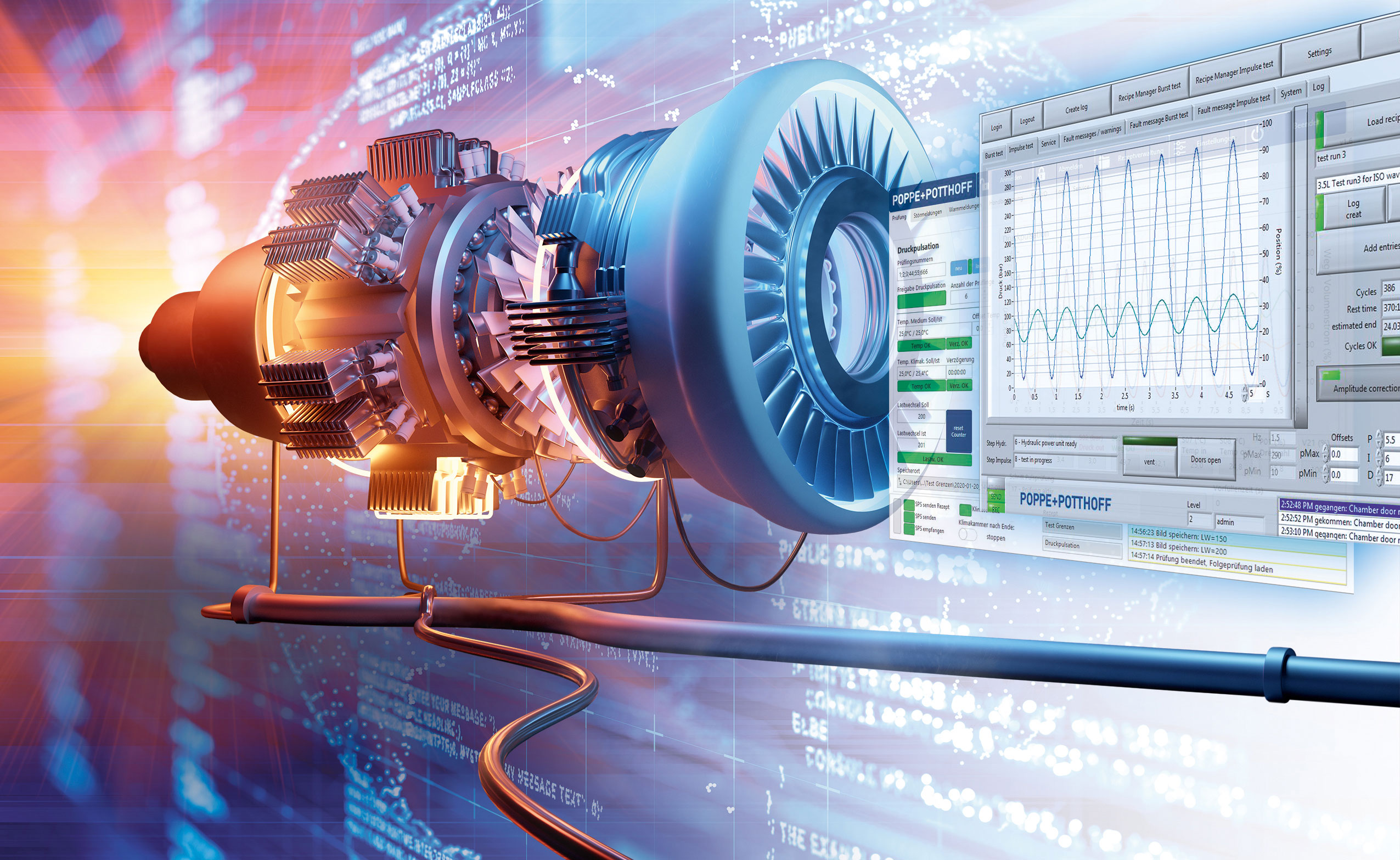
Pressure cycle test benches up to 6,000 bar. The pressure cycle test simulates the service life of a component using a sine (wave) or trapezoidal (square) waveform. Our pressure test benches are suitable for testing metal and plastic components through to aluminium and special materials.
Home | Test Stand | Pressure Cycle Test
Pressure Cycle Tests With
Media- & ambient temperature control
Pressure Cycle Testing, also known as pressure impulse testing, or pressure pulsation testing simulates the design life of a pressure vessel by exposing the DUT to various pressure load changes.
Pressure pulsation testing finds use in many industries and ranges from low-pressure tests at 6 bar e.g. for cooling systems for electronic vehicles, but also up to 6000 bar or more for common rails systems. The applications are wide-ranging and our state-of-the-art test rigs support companies in R&D and quality control and validation. Tests are frequently run with coolant (glycol), oil, water, and more
The Poppe + Potthoff pressure cycle test stands to test the operating or fatigue strength of various components. The endurance pressure test exposes potential weaknesses of components with respect to design and material. The pressure curve is flexible and the test P+P rigs can create pressure as a sine curve (wave) or a trapezoid (square) curve. For special applications, the test rigs can also run a needle pulse, also known as a water hammer test. In addition, the pressure test rigs can be run with a climate chamber to simulate ambient temperature, and also a fluid heating and cooling unit could be added.
In order to simulate real-life temperature and humidity conditions, we can easily integrate a climate chamber and fluid heating and cooling unit. We work closely with climate chamber manufacturers around the globe and can integrate a climate chamber for ambient temperature simulation and humidity control.
Standard Pressure Cycle Test Bench 1000 / 2000 bar
The standard impulse test stand is operated with a hydraulic pressure of 330 bar. The pressure is generated through a hydraulic power unit and drives the pressure booster via a regulation valve. The pressure booster has a constant pressure ratio and produces high pressure through linear movements. The system is equipped with high-dynamic servo-regulator valves, which guarantee precise repeatability even at very high test frequencies.
Performance Data

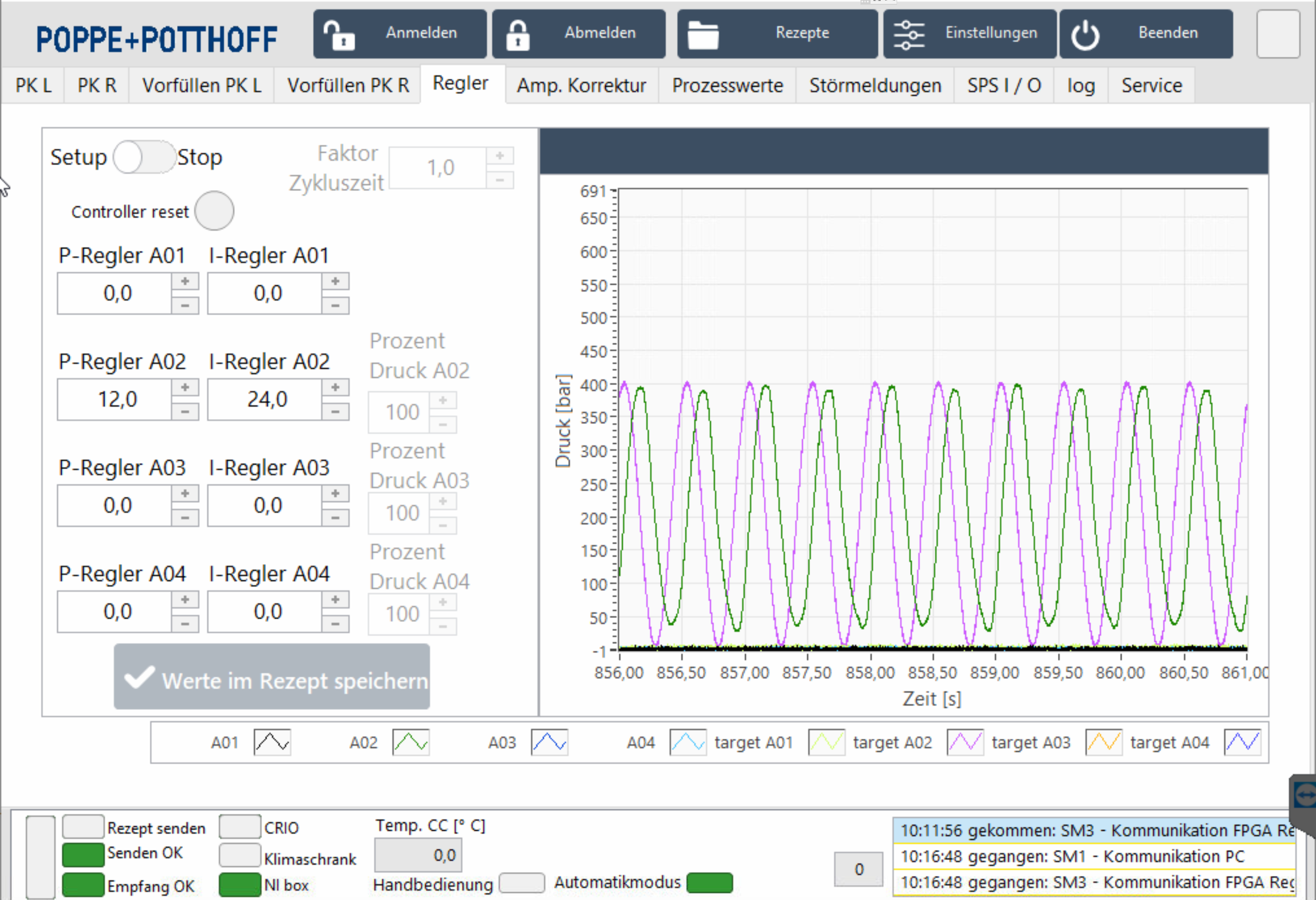
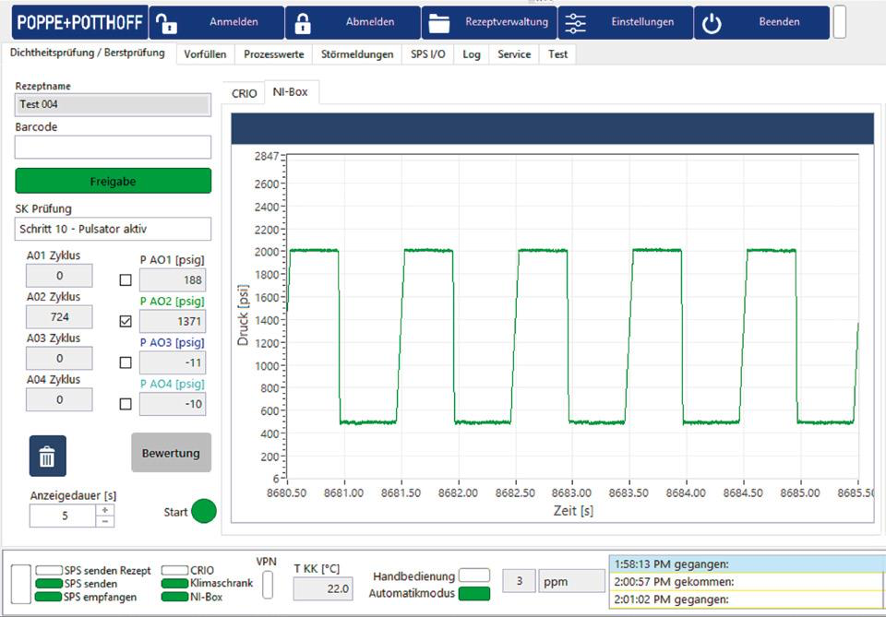
High-Pressure Impulse Test Rig up to 6000 bar
The pressure pulsation test reveals potential weaknesses of components in terms of component design and material composition. Exposing components to thousands or even millions of pressure load changes gives insight into the component’s structure and weak spots. Typical components that require testing at such high pressures are common rails or injector nozzles for example. The pulse pressure is generated by a pressure intensifier with a hydraulic drive. A hydraulic unit generates a constant hydraulic pressure of 350 bar and this pressure drives the pressure intensifier via a control valve. The pressure intensifier has a constant pressure ratio and generates high pressure through its linear movements. A highly dynamic servo control valve is used as the control valve, which enables very high test frequencies with precise repeatability. The course of the test pressure is measured with a pressure transducer and stored. These data sets allow the quality of the test to be assessed later. The pressure control of the system also works via this pressure sensor. Hydraulic oil is used as the test medium. An optimally tuned cooling system keeps the temperature at the pressure intensifier and in the hydraulics in balance. Cooling is a very effective water cooling.
Performance Data

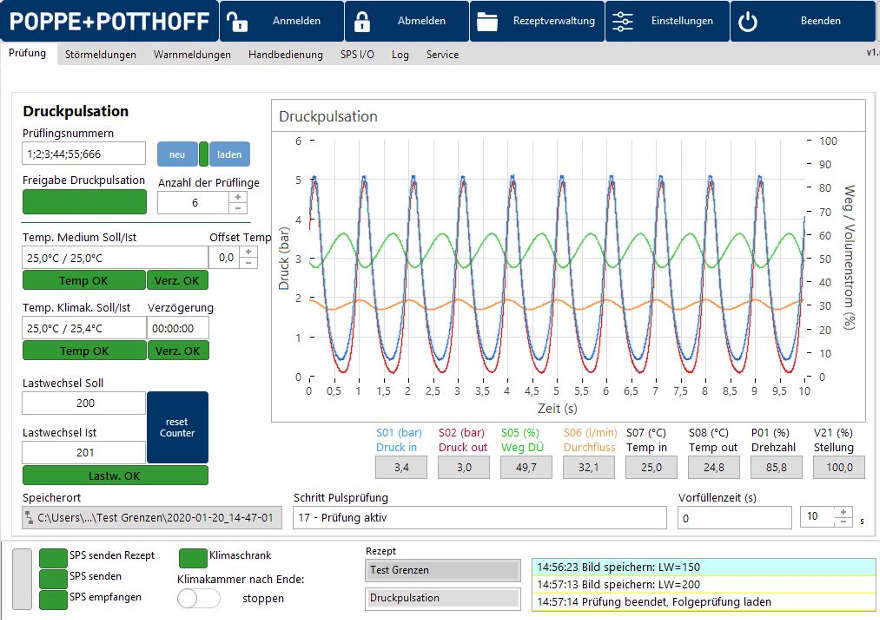

Pressure Cycle-, Burst- and Leak Testing
The test rig has two chambers in which up to ten DUTs can be tested at an ambient temperature of -60°C up to 180°C simultaneously. 3 separate fluid circuits allow Glycol (coolant), oil, and water for example to be used as test fluids in one test bench and therefore offer a versatile test setup for any test lab.
The climate chamber acts as the rig’s test space and enables tests at large temperature ranges to simulate real-life situations, such as tests on the racetracks on Nürburgring or Silverstone, in the Siberian tundra, or in the deserts of Africa.
Various servo-hydraulic pressure intensifiers are tailored to each type of test, allowing very accurate control of the pressure curve. Pressure pulsation tests can be performed with a frequency of 0 – 10 Hz (most common is 0.5 – 2.5 Hz) with a trapezoid (square) curve at pressure ranges such as 4 – 25 bar for e.g. and 0 – 160 bar. The sine (wave) curve has a frequency of 0 – 10 Hz and pressures of 0 – 6 bar e.g. The maximum burst pressure is 500 bar. Data acquisition and visualization are performed using National Instruments’ LabVIEW. All test sequences and data are automatically stored on the control unit and can be exported to the company network for analysis.
Performance Data



Pressure Cycle-, Burst- and Leak Testing
The test rig has two chambers in which up to ten DUTs can be tested at an ambient temperature of -60°C up to 180°C simultaneously. 3 separate fluid circuits allow Glycol (coolant), oil, and water for example to be used as test fluids in one test bench and therefore offer a versatile test setup for any test lab.
The climate chamber acts as the rig’s test space and enables tests at large temperature ranges to simulate real-life situations, such as tests on the racetracks on Nürburgring or Silverstone, in the Siberian tundra, or in the deserts of Africa.
Various servo-hydraulic pressure intensifiers are tailored to each type of test, allowing very accurate control of the pressure curve. Pressure pulsation tests can be performed with a frequency of 0 – 10 Hz (most common is 0.5 – 2.5 Hz) with a trapezoid (square) curve at pressure ranges such as 4 – 25 bar for e.g. and 0 – 160 bar. The sine (wave) curve has a frequency of 0 – 10 Hz and pressures of 0 – 6 bar e.g. The maximum burst pressure is 500 bar. Data acquisition and visualization are performed using National Instruments’ LabVIEW. All test sequences and data are automatically stored on the control unit and can be exported to the company network for analysis.
Performance Data



R&D Pressure Pulsation Test Stand for H2 Components up to 2000 bar
P+P test stands are used in research & development and to constantly benchmark the manufacturing process and H2 component quality. To guarantee the safety of media-carrying components during their entire service life, components must undergo endurance tests under extreme load and temperature changes. P+P offers and uses flexible solutions while simulating diverse conditions and environments. Our test systems allow for leak tests with a range of more than 1050 bars, depending on the specification.
The test stand can be expanded with several expansion stages. Depending on the option selected, pressure cycle tests up to 2,000 bar and 10 Hz can be generated in addition to the gas test. Pressure ramps of up to 3,000 bar can be generated with the test circuit for hydrostatic and burst pressure tests.
The system consists of two modules. The tests can be carried out in a climate chamber, in which the components can be exposed to media and outside temperatures from -40 °F (-40 °C) to +320 °F (+160 °C). The individual printing units are precisely tailored to the properties and components of the customer in order to generate ideal test conditions. A common setup in the industry and for this specific test stand is one intensifier for 1000 psi (70 bar), two for up to 4000 psi (275 bar) and one for up to 6000 psi (414 bar). A typical test medium is water, glycol, aerospace oil, gas, and other oils.
Performance Data

Testing Components in a Climate Chamber:
e.g. Aerospace Components
The PPM 432 pulse test stand offers a powerful system for testing cooling components, hydraulic components, fluid systems and various other pressure vessels for the aerospace industry.
For e.g. electronic units such as ECUs on board produce heat which has to be dissipated to ensure that the systems function reliably during flight. The pressure pulsation test stand simulates a controlled pressure change at various pressure ranges and temperature conditions. The system consists of two modules. The supply unit houses the pressure intensifiers, cooling and heating units and the control system. The actual testing takes place in a climate chamber in which the DUTs are tested at a media temperature of -40°F(-40°C) to +320°F (+160°C) and changing environmental conditions from -58°F (-50°C) to +320°F (+160°C). The pressure intensifiers can be designed to the customers’ requirements and components’ idiosyncrasies. A Common setup is a pressure intensifier for up to 1000 psi (70 bar), two for up to 4000 psi (275 bar) and one for up to 6000 psi (414 bar), while Aerospace oil is used as the test medium.
Performance Data

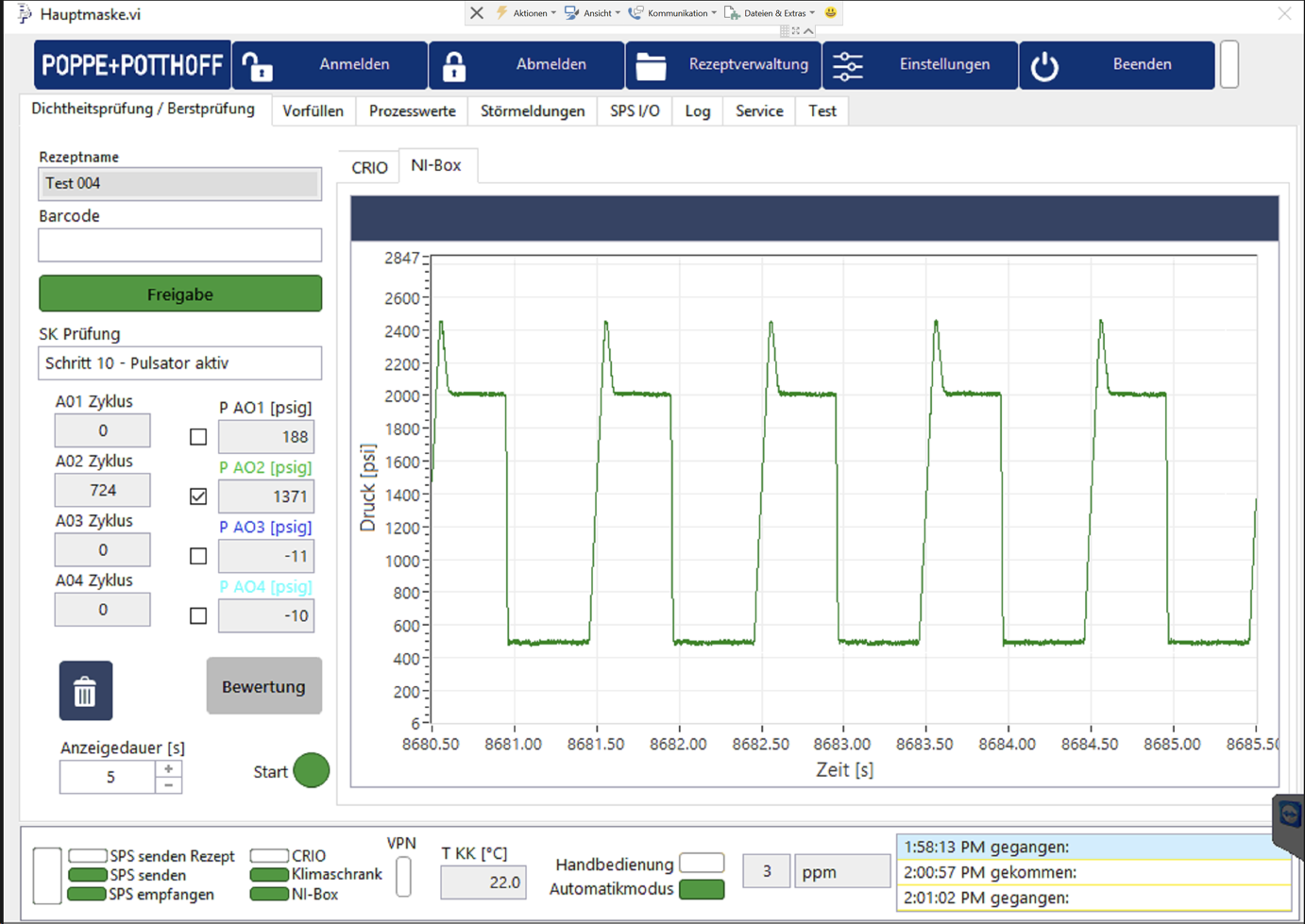

Pressure Cycle Testing Cooling Circuits
with Under- and Overload Pressure
A state-of-the-art pressure pulsation test stands with media flow control and pressures up to 12 bar. The pressure pulsation rig is a flexible system and can be adapted to customers testing requirements. It covers tests for industry standards such as VW8000 or BMW Group M07 with under and overload pressure, which is currently a highly requested test for electronic vehicle components. A pressure test rig is an independent unit. It contains a media temperature control unit and an integration into a climate chamber. The pressure rig is powered by up to 12 bar by a hydraulic pressure intensifier. It has the capability to perform a vacuum test with a pressure change from negative pressure to positive pressure.
Typical DUTs are electronic control units (ECUs), cooling systems, battery housing, and many more.
Performance Data

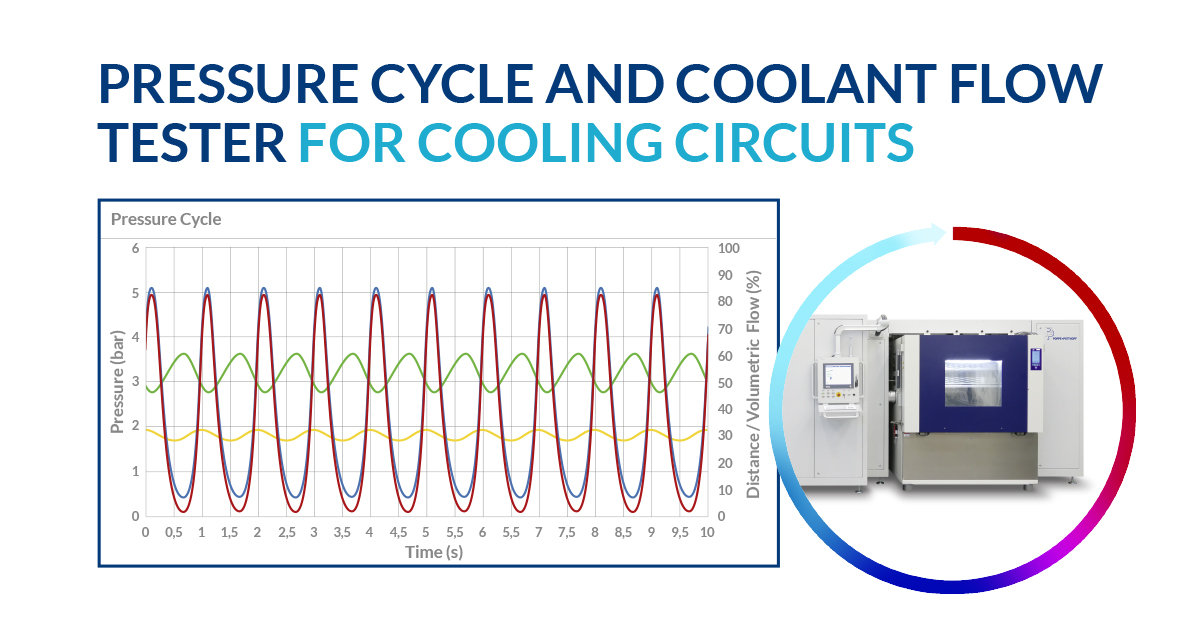
Water Hammer Test
The pressure test system has a servo-controlled hydraulic intensifier to generate pressure pulsation. This servo unit is a linear, highly dynamic feed axis. With this axis, one impulse mass is accelerated and the impulse mass hits a pressure piston. The pressure piston generates the pressure surge in the DUT. The acceleration and impact speed of the constant impulse mass is controlled by a dynamic digital controller. The level of the pressure shock is measured and the impact speed of the impulse mass is controlled via a control system. The pressure test rig can be expanded to enable burst tests.
Performance Data
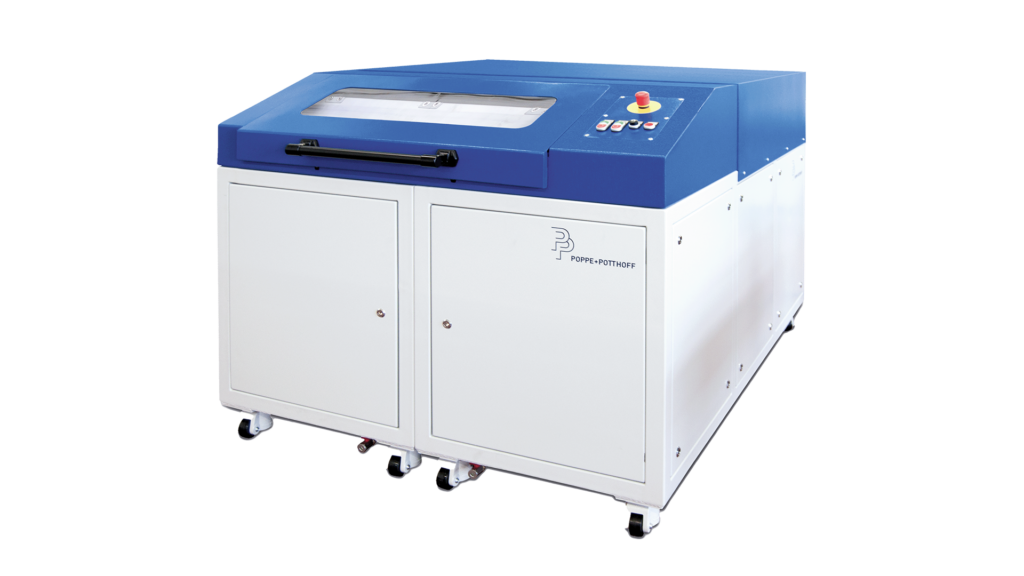

Test-as-a-Service
We offer several pressure tests in various pressure ranges as a test service. Whether for research and development or serial production, please contact us with your testing requirements for a non-binding offer.
PRESSURE TEST BENCHES AND APPLICATIONS
PRECISE, REPEATABLE AND RELIABLE
As a specialist in pressure testing technology and state-of-the-art test rigs, Poppe + Potthoff Maschinenbau supports the development and production of particularly resilient components made of various materials – especially for automotive, shipbuilding and mechanical engineering as well as fluid and the medical industry. We offer individually designed test benches such as burst pressure test rigs, pressure cycle test benches, leak test systems, functional test rigs and autofrettage systems.
BOOK AN INDIVIDUAL CONSULTATION
WITH A DEDICATED SALES ENGINEER
Our experienced technical sales team will help you with the implementation of your project and will find a solution tailored to your specifications and your requirements. We are represented internationally and can support you and your company worldwide. Our team has completed hundreds of projects many of which involved supporting test facilities with identical equipment. P+P Maschinenbau is your internationally trusted partner.
Know-how, excellent knowledge of the market, affinity with our products and close cooperation with you, our customers, are the guarantors of our success.


